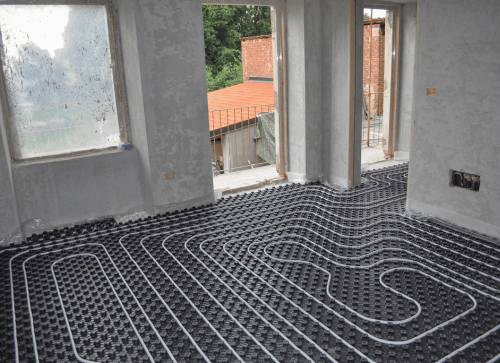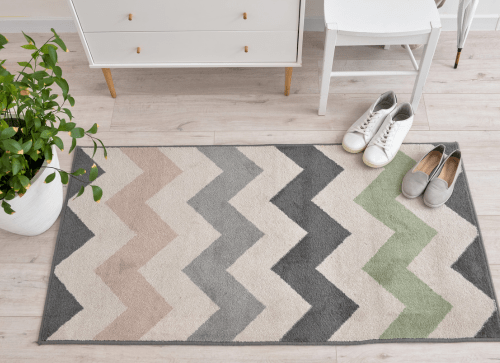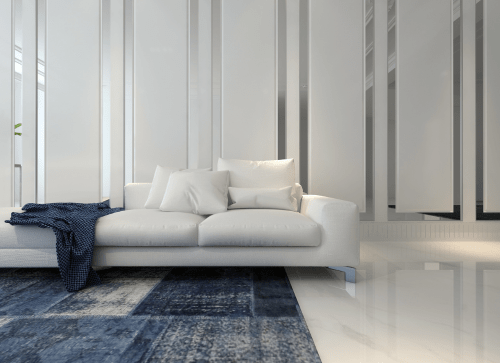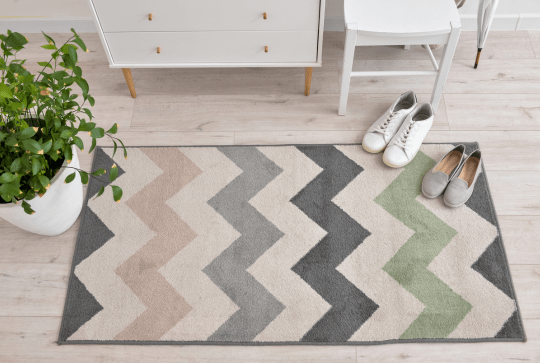A common heating option that delivers cosy warmth throughout a home is underfloor heating (UFH). However, when decorating and adding personal touches to a room with UFH, one common question arises: Can you use rugs with underfloor heating? In this blog article, we will examine the compatibility of rugs and underfloor heating and offer crucial information to support your decision-making regarding including rugs in your UFH system.
Heat Conductivity
Heat conductivity plays a crucial role in ensuring optimal performance when it comes to utilising carpets with underfloor heating. Traditional rugs with thick, dense piles can act as insulators, impeding heat transfer from the floor to the room. This can result in uneven heat distribution and decreased heating efficiency. However, this doesn’t mean that rugs should be completely avoided in underfloor heating systems.
To strike a balance between comfort and efficient heat transfer, it is recommended to choose rugs made of natural fibres such as wool or opt for thin flat-weave rugs. Natural fibre rugs have lower heat resistance and better heat conductivity, allowing the warmth generated by the underfloor heating system to pass through effectively. This ensures that the heat is not trapped beneath the rug but evenly dispersed throughout the room, creating a cosy and comfortable environment.

Rug Placement

Proper placement of rugs in conjunction with underfloor heating is crucial to maximising the efficiency and performance of your heating system. While rugs can add warmth, comfort, and aesthetic appeal to a space, it is important to consider their placement to ensure optimal heat movement and distribution.
Draping a rug over the entire floor surface can significantly impede the movement of heat, reducing the efficiency of your underfloor heating (UFH) system. Instead, it is recommended to strategically position rugs in specific areas where you desire added warmth or visual interest.
Consider placing rugs where you frequently walk, such as in seating areas, near sofas or armchairs, or in front of beds. These strategic placements will provide a cosy and comfortable surface to walk on while allowing ample uncovered floor space for the heat to radiate freely.
Rug Thickness and Density
Thinner rugs are generally more suitable for underfloor heating as they allow for better heat transfer from the floor to the room. In addition, thinner rugs have a lower thermal resistance, meaning they do not act as a significant barrier to the heat emitted by the underfloor heating system.
On the other hand, thicker and denser rugs, while providing additional cushioning and comfort underfoot, can impede the heat flow from the underfloor heating system. The dense fibres and increased thickness of these rugs create a higher thermal resistance, hindering the transfer of heat and reducing the efficiency of the UFH system.
However, if you prefer a thicker rug for its aesthetic or comfort value, options are specifically designed for use with underfloor heating systems. These rugs have lower thermal resistance ratings and are engineered to allow heat to permeate more readily.

Regular Maintenance and Monitoring

It’s critical to regularly check the floor’s temperature when using rugs with underfloor heating to make sure it stays within the manufacturer’s advised ranges. You can maintain a cosy and secure heating environment by installing a thermostat with floor temperature monitoring features. Additionally, shifting and elevating rugs regularly can guard against any potential harm to the floor brought on by prolonged exposure to dampness or too much heat.
Regularly clean your rugs to prevent dust, dirt, and debris from accumulating. Vacuuming is typically the best method for routine cleaning, but make sure to use a vacuum cleaner that is suitable for use on rugs. Avoid using steam cleaners or excessive moisture, as they can damage the rug and the underfloor heating system.
Rugs and Underfloor Heating
Although they can be used in rooms with underfloor heating, rugs should be carefully considered for how they will affect the conductivity and distribution of heat. With the right thickness, positioning, and rug selection, you can bring warmth and flair to your home while effectively transferring heat.
To help you strike the ideal balance between underfloor heating effectiveness and rug usage, JCW Underfloor Heating provides experienced advice and various UFH options, ensuring comfort and energy savings in your home. With the right thought and care, you may benefit from both the rugs’ cosiness and underfloor heating’s convenience.
